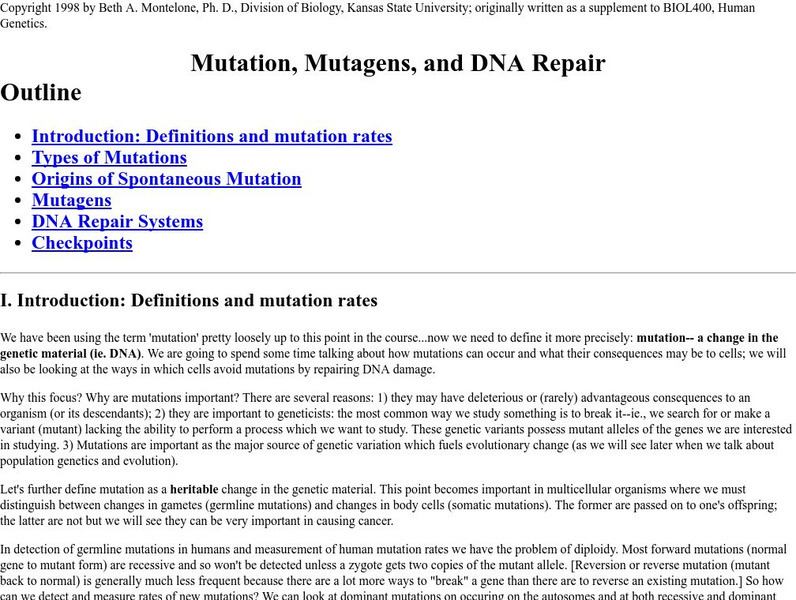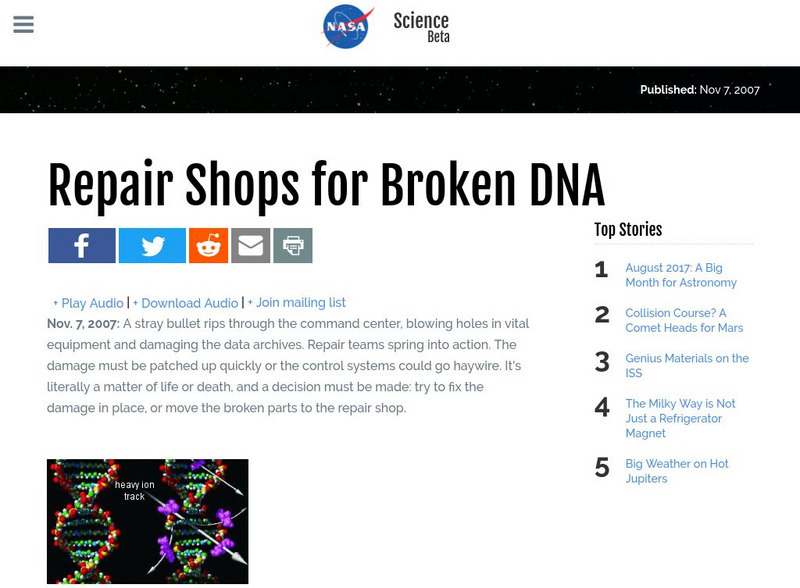PBS
Pbs Learning Media: Molecular Clocks: Proteins That Evolve at Different Rates
In this graphic and article from "The Human Evolution Coloring Book" by Adrienne Zihlman, four different proteins from humans and horses are compared and the reasons each protein evolves at its own characteristic rate are discussed.
PBS
Pbs Learning Media: The Advantage of Sex: Sexual Versus Asexual Reproduction
Why did sex evolve? The likely answers, in this essay written for the PBS series "Evolution" by science journalist Matt Ridley, may surprise you.
PBS
Pbs: No Bigger Than a Minute
Hear the tale of one man's struggle with being a dwarf and how he has worked to overcome. Get a new perspective of little people and learn to gain acceptance.
University of Utah
University of Utah: Genetic Science Learning Center: What Causes Dna Mutations
Provides a great overview of DNA damage from agents such as ultraviolet light, nuclear radiation, and certain chemicals. Includes DNA strand drawings.
Exploratorium
Exploratorium: Mutant Fruit Flies
Find out what genetic mutations are and view some of the mutations that affect the wing structure, body color, eye color, and head shape of fruit flies.
National Cancer Institute at the National Institutes of Health
National Cancer Institute: What Are Gene Mutations?
This website provides an answer to the following question: "What are Gene Mutations?" Many links are provided throughout this short description that access information on related subjects.
BiologyWise
Biology Wise: Genetic Diversity Explained With Examples
Explains what genetic diversity is, things that cause it, factors that affect it negatively, and why it is so important. Includes examples of the presence and absence of genetic diversity.
Kansas State
Mutations, Mutagens and Dna Repair: Types of Mutations
Good explanation of the different types of mutations. Solid background on base-pair substitution.
NASA
Nasa: Repair Shops for Broken Dna
Discover more about the late-breaking research into DNA repair shops located in the cell. The work is being done by NASA scientists who are interested in the effects of radiation on astronauts. (Nov. 7, 2007)






